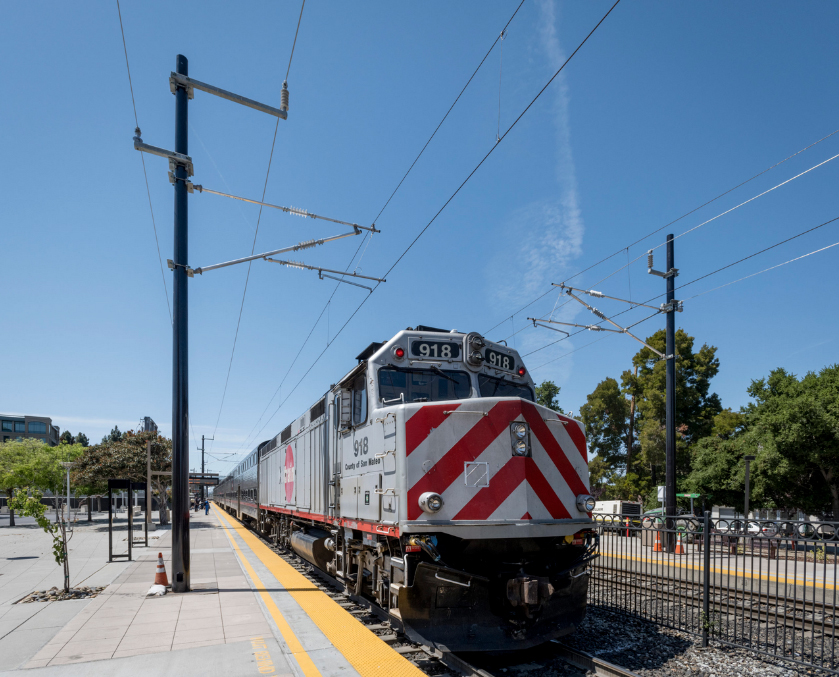
SAN CARLOS, Calif. — Electrification of Caltrain’s line between San Francisco and San Jose, Calif. Is now estimated to cost $2.44 billion, some $462 million over the initial estimate and $129 million more than a Federal Transit Administration estimate from earlier this year, the commuter operator said in a news release.
The 47-mile electrification project, which began construction in 2017, remains on schedule for completion in 2024. The catenary system should be completely installed by next summer, allowing catenary testing to begin in 2022.
The new cost figure reflects COVID-19 related delays, as well as utility and real estate work. The cost reflects negotiations with contractor Balfour Beatty to settle commercial issues and costs arising from extending completion of the project to 2024. The settlement also establishes a shared risk pool to manage future issues and provides new incentives for early completion of aspects of the project.
Caltrain is working with federal, state, and local partners to bridge the resulting funding gap.














One thing I learned while a museum member is that ANYTHING receiving government funds will at least double the cost. We had a project that an expert estimated would cost $62,000. We received a $100,000 federal grant which stipulated that any RfP published would require language stating that it was government funded. We decided to use any surplus for additional work on the grounds and additions and upgrades to enhance the visitor experience.
The lowest bid – BECAUSE BIDDERS SAW IT WAS ‘FREE’ GOVERNMENT MONEY – was $117,000. We ended up having to finish the project using volunteer labor and donated materials.
Oh, and the additional work on the grounds, additions, and upgrades to enhance the visitor experience have yet to happen.
As I understand. These costs include all new rolling stock. As well grade separations, rebuild stations, some 4 tracking so expresses, and Ca HSR can pass each other. Those new EMUs are not cheap.
Looking at a recent Joint Power Board (who run Caltrain) slide deck for a electrification project progress report, besides Covid delays and supply chain issues, the critical path is being driven by signaling system compatibility problems.
Caltrain electrification has been under serious consideration since the early 1990’s. There was a large amount of signal work done on the Corridor (along with additional passing trackage) as part of the Ponderosa Project ~20 years ago. Why wasn’t the signaling made upgradable to electrification when all the work was done then? Even in ~2000, the choice of high voltage AC at commercial line frequency (60 Hz) would have been the obvious choice for the upgrade.
It’s the Bay Area, full of NIMBYs and BANANAs driving up real estate costs for even the smallest plot of land. Then there are CEQA and NEPA requirements. Add in SHPO requirements that can stop a project dead in its tracks. Add in RWQCD and BAAQMD requirements. Throw in a limited work window and wink wink nudge nudge weasel factor costs, and you have a recipe for extremely high costs. Oh, and don’t forget Davis-Bacon prevailing wages and benefit requirements. I worked in the Bay Area; BTDT.
And the electricity source, solar of course. So the trains will only run during sunny days.
Curious as to what the provisions are for providing the electricity for the project.
Am I missing something? At $2.44 Billion for 47 route miles, assuming double track (94 miles total) this comes out to nearly $26 Million/track-mile. This seems ridiculously expensive. Is this because it’s a government contract?
Yes.
Anything being built in California, take your estimate, add 200%.